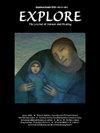传统波斯果输注(Naqu Fawakeh)与水飞蓟素降低儿科ALL化疗引起的肝毒性的疗效:一项三盲随机临床试验
IF 2.2
4区 医学
Q3 INTEGRATIVE & COMPLEMENTARY MEDICINE
引用次数: 0
摘要
维持期化疗引起的肝毒性是儿童急性淋巴细胞白血病(ALL)的关注。传统波斯医学(TPM)推荐Naqu Fawakeh,一种以水果为基础的输液,用于治疗肝脏炎症。本研究比较了那曲法克和水飞蓟素对化疗副作用的影响。在这项三盲随机临床试验中,82名5-17岁的儿童接受了8周的Naqu Fawakeh (n = 44)或水飞蓟素(n = 38)治疗。两组患者分别用5 mL(≤30 kg体重)和10 mL(≥30 kg体重)给药,每日3次,饭后给药。在干预前后评估肝酶(AST、ALT)和化疗相关症状(恶心、呕吐、便秘、口渴)。出于伦理考虑,没有纳入安慰剂组。两种干预措施都显著降低了肝酶水平,Naqu Fawakeh组的效果更大。ALT组间平均差异有统计学意义(P = 0.029)。Naqu Fawakeh组(P < 0.001)和水飞蓟素组(P = 0.005) ALT显著降低;两组AST也均降低(Naqu Fawakeh: P = 0.005;水飞蓟素:P = 0.011)。两种治疗方法均减少了24小时内和24小时后的恶心和呕吐,以及口渴,但组间平均差异仅在口渴方面具有统计学意义(P = 0.001)。在Naqu Fawakeh组中,恶心和口渴的减轻程度一直更大。没有观察到不良的肾脏或血液反应。因此,那曲法克作为一种安全的支持性治疗,在降低肝酶方面比水飞蓟素更有效。进一步的研究证实了这一发现。本文章由计算机程序翻译,如有差异,请以英文原文为准。
Efficacy of a traditional persian fruit infusion (Naqu Fawakeh) versus silymarin in reducing chemotherapy-induced hepatotoxicity in pediatric ALL: A triple-blind randomized clinical trial
Maintenance-phase Chemotherapy-induced hepatotoxicity is concerned in pediatric Acute Lymphoblastic Leukemia (ALL). Traditional Persian Medicine (TPM) recommends Naqu Fawakeh, a fruit-based infusion, for liver inflammation. This study compare the effect of Naqu Fawakeh and silymarin on Chemotherapy side effects.
In this triple-blind, randomized clinical trial, 82 children aged 5–17 years received either Naqu Fawakeh (n = 44) or silymarin (n = 38) for eight weeks. Both groups were administered by 5 mL (<30 kg body weight) and 10 mL (≥30 kg), three times daily after meals. Liver enzymes (AST, ALT) and chemotherapy-related symptoms (nausea, vomiting, constipation, thirst) were assessed before and after the intervention. No placebo group was included due to ethical considerations.
Both interventions significantly reduced liver enzyme levels, with a greater effect in the Naqu Fawakeh group. The mean difference between groups was significant for ALT (P = 0.029). ALT decreased significantly in the Naqu Fawakeh group (P < 0.001) and in the silymarin group (P = 0.005); AST also decreased in both groups (Naqu Fawakeh: P = 0.005; silymarin: P = 0.011). Both treatments reduced nausea and vomiting within and after 24 h, as well as thirst, though the between-group mean difference was significant only for thirst (P = 0.001). Reductions in nausea and thirst were consistently greater in the Naqu Fawakeh group. No adverse renal or hematologic effects were observed.
Therfore Naqu Fawakeh, as a safe and supportive therapy, is more effective than silymarin in reducing liver enzyme. Further studies are confirmed findings.
求助全文
通过发布文献求助,成功后即可免费获取论文全文。
去求助
来源期刊

Explore-The Journal of Science and Healing
医学-全科医学与补充医学
CiteScore
3.00
自引率
8.30%
发文量
179
审稿时长
25 days
期刊介绍:
EXPLORE: The Journal of Science & Healing addresses the scientific principles behind, and applications of, evidence-based healing practices from a wide variety of sources, including conventional, alternative, and cross-cultural medicine. It is an interdisciplinary journal that explores the healing arts, consciousness, spirituality, eco-environmental issues, and basic science as all these fields relate to health.
 求助内容:
求助内容: 应助结果提醒方式:
应助结果提醒方式:


